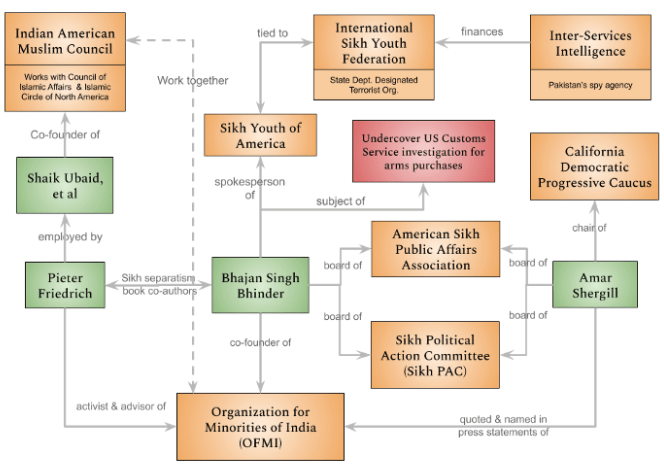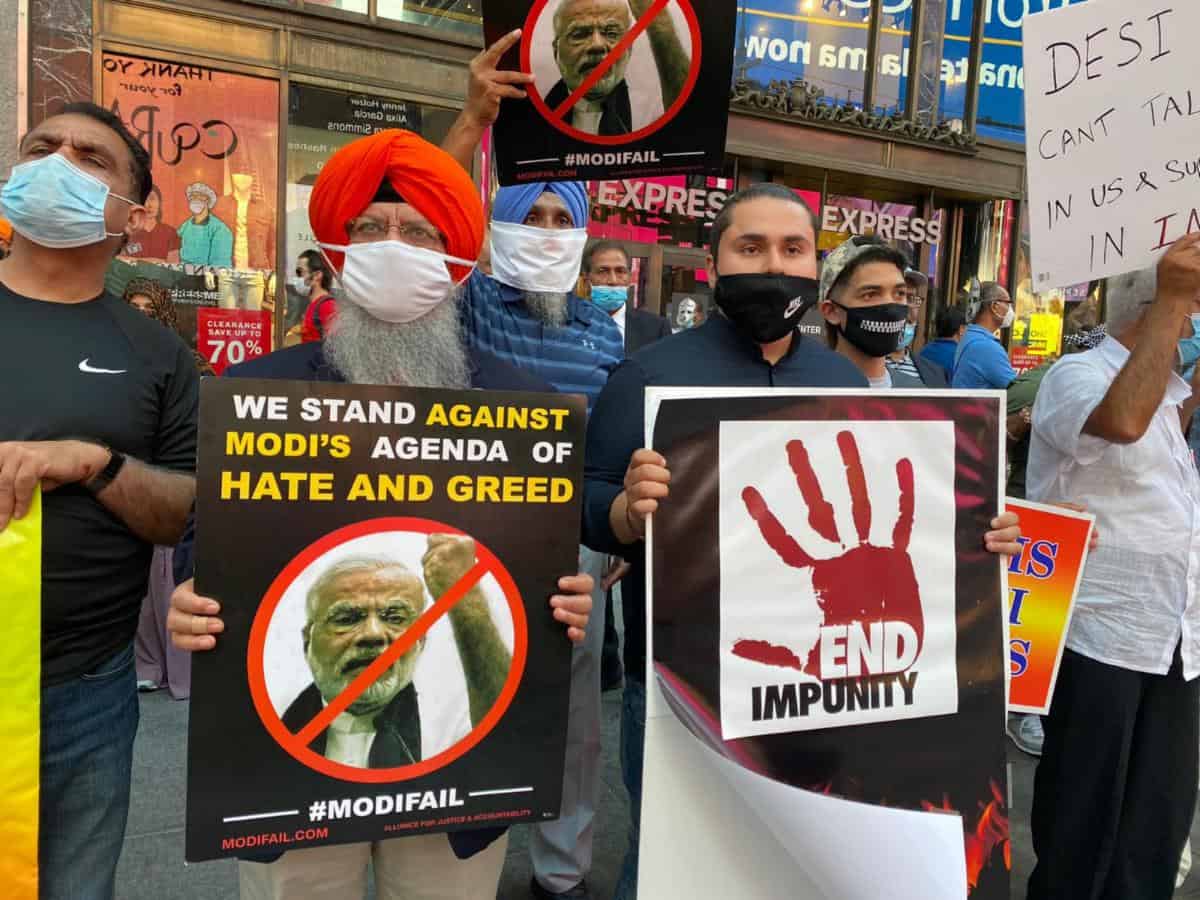Zaheeruddin Ali Khan
Onto greener pastures
Hyderabad is blessed to have a Muslim diaspora that has helped revive its population socioeconomically at home. This includes the people settled in the overseas Deccani citadel of Chicago, the early post-Police Action outpost for more well-off Hyderabadis that was London, Sydney, Toronto, Dubai, or the less glamorous yet fortune-changing metropolis of Jeddah.
To varying extents, they maintained their roots in the homeland — be it coming back for weddings or holding onto property that is in another family member’s name, or just letting their kids experience an exotic destination.
Though in the recent years, those settled in relatively more democratic Western countries, have taken note of the majoritarian pall of gloom descending upon Hindustan.

Organisations such as Council of Minority Rights in India (CMRI), American Federation of Muslims of Indian Origin (AFMIO), North American Indian Muslim Association (NAIMA), and Hindus for Human Rights (Hindus for Human Rights) have emerged. The former three are mostly run by Muslims and have a heavy Hyderabadi contingency. While such groups have many feats to speak of, they are punching below their weight.
Plus, President-elect Joe Biden will take his place in the oval office with Vice-President-elect Kamala Harris will not be too far away.
Hence, there is hope for a secular, egalitarian America. Hopefully, something similar will transpire in India.
Though about two decades ago, the battle for India’s soul had begun on the overseas front.
Post-Godhra, India comes to America
Among the first of these organisations was the Illinois-based Indian American Muslim Council (IAMC). Founded in 2002 after the Gujarat riots, these were the folks who were responsible for the then state Chief Minister, Narendra Modi, being denied a visa into America.
Consequently, about a year later, another advocacy outfit with strong links to the overseas RSS organisations such as the Hindu Swayamsevak Sangh, the Vishwa Hindu Parishad-America (VHP-A) came into existence.
Today, this faction is known as the Hindu American Foundation (HAF).

Yes, the IAMC averted Modi’s entry into the US. However, the HAF and its patrons would not only send funds to Indian fringe elements to attack Christmas carolers while lobbying for Diwali to be declared a national holiday in their adopted country.
They tapped into their student networks nurtured all over the country since the 1990s to build the HAF. They basically did ingrain into their youth a very exclusionary idea of India, while simultaneously attuning them to the egalitarian American principles.
This vast apparatus that helps chip away at the idea of India from afar is harmful. Though it deserves a hat-tip for utilising an asset that the Indian Muslim lobby failed to nurture in its onslaught against Hindutva abroad — the youth!
Guilt ≠ substitute for grassroots organisation and youth presence
Be it the Hyderabadi Association of the Washington Metropolitan Area (HAWMA) or any of the aforementioned organisations with a Hyderabadi Muslim contingency, both have the best intentions and started off well. However, with minimal youth involvement, how exactly can there be any organisational longevity or capacity to further its objectives?
That too, against the Goliath that is the HAF.
If a certain portion of the chart below concocted by the HAF is to be believed, then the IAMC is basically bankrolling Pieter Friedrich. Pending the veracity of this portion of an otherwise far-fetched diagram, it looks like Indian American Muslim factions are putting their money where their mouths are.

Friedrich’s Caravan, Clarion, and Medium exposés about Sanghi
inroads into the American policy landscape were quite effective.
Although this does beg a few questions.
Is there any chance that any of the children of those running the above-mentioned organisations could also do what Friedrich did to help keep the idea of India alive? You know, maybe dabble a bit in policy research, journalism, and advocacy beyond showing up to Republic Day celebrations? Or would they rather keep their kids away from these endeavours on a full-time professional as well as a voluntary basis?
Yes, pushing their children to instead pursue more STEM (Science Technology Engineering Mathematics) professions in lieu of comparatively less lucrative, less stable professions is understandable. Also, there is a certain “Who you know, not what you know” aspect to breaking into many non-STEM industries. The need to build-up networks within these circles is also paramount.
That being said, an organisation cannot simply sustain itself in the long term by solely outsourcing government relations activities to Ajit Sahi, ground-breaking exposés to Pieter Friedrich, and protests to articulate activists like Jada Bernard.
This is not to lambast these three for their excellent work or to give more preference to “indigenous” voices. Though one would think that Friederich and Bernard make for more conscious Indian American Muslims than that the children of folks who run the IAMC, CMRI, and etc.
The feeling of “Why am I so fortunate to be in the West and my brethren are undergoing such trials and tribulations back home?” is a good start. Then again, running an advocacy group requires much for than this ethos of guilt alongside the ability to donate as well as collect funds.
Such run-of-the-mill strategies sometimes developed during biryani parties in the basement of a fellow Hyderabadi’s suburban abode are bereft of the following three things: 1) follow-up on activities, 2) constantly changing strategies (barring there being a method to this madness in doing so), and 3) a long-term vision.
How far can one get without any of these three?
You can’t always have your cake and eat it
Whether it is planting interns on Capitol Hill, ensuring youth presence at various policy conferences as well as cultural events, or even promoting their own youngsters who excel in their fields, the IAMC or its breakaway group— the CMRI — ought to give respect to its opponent.
And maybe learn from the foe as well.
As for why the CMRI separated from the IAMC, that itself is another mystery.
Plus, what happens if Congress comes back to power? Will these advocacy groups cease to exist? Because the NRI-Hindutva army had its troops ready much before 2014.
Of course, such participation in advocacy to keep the India of Jawaharlal Nehru and Maulana Abul Kalam Azad can come with its pitfalls. In an attempt to uphold India’s secularism from a distance, one surely should not create an atmosphere where the first or second-generation Indian-American family lives, eats, and breathes the
subcontinent.
That too, while forgetting s/he is in the West.
The author is the Managing Editor of the Siasat Urdu Daily.


